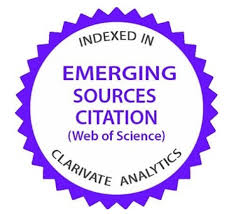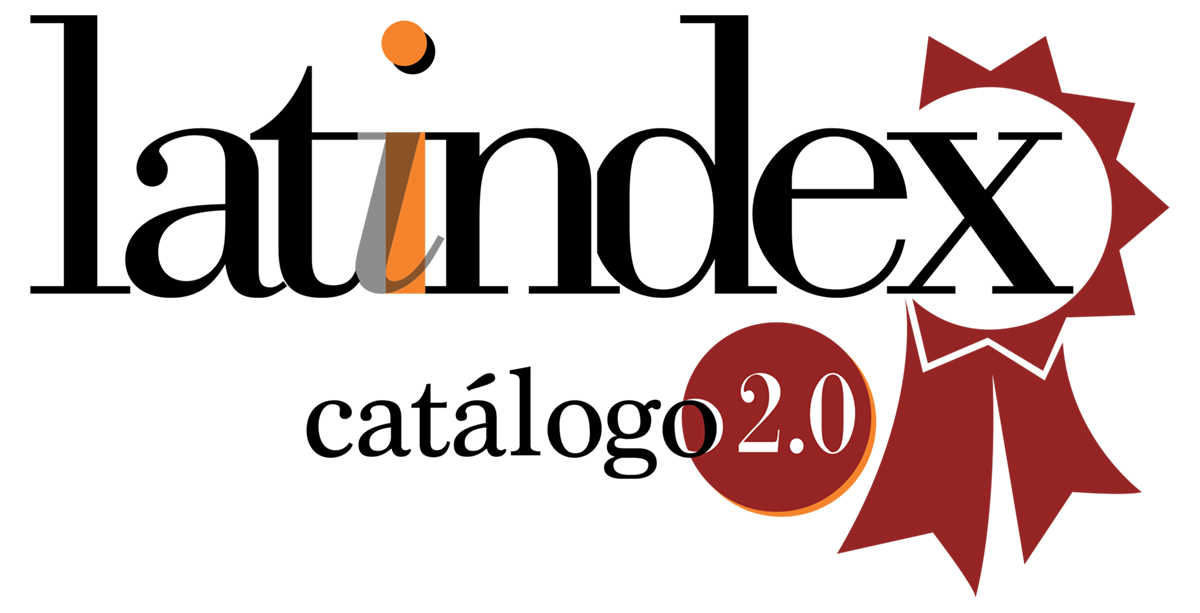Doing (Prison) Research Differently
Reflections on Autoethnography and ‘Emotional Recall’
DOI:
https://doi.org/10.35295/osls.iisl/0000-0000-0000-0932Palabras clave:
metodología cualitativa, recuerdo emocional, discreción, funcionarios de prisiones, mafioso, autoetnografíaResumen
Este artículo ofrece una reflexión en torno a la familia de métodos llamada autoetnografía, así como a la experiencia de practicar la autoetnografía como continuación de una etnografía carcelaria. A través de una inmersión en la literatura sobre autoetnografía, proporciona un repaso de dicha metodología y se centra en una experiencia particular de hacer investigación (penitenciaria) de una forma diferente, a través del recuerdo emocional como instrumento heurístico. De forma más específica, el artículo muestra cómo el recuerdo emocional fue clave para un hallazgo investigativo sustancial mediante un nuevo análisis autoetnográfico de datos obtenidos durante una etnografía de la amenaza del uso de la fuerza por parte de los funcionarios en una prisión italiana. Mediante la autoetnografía, se descubrió que el favoritismo de los funcionarios hacia los mafiosos era un aspecto clave en el uso de la discreción por parte de los funcionarios.
Descargas
Metrics
Estadísticas globales ℹ️
|
560
Visualizaciones
|
631
Descargas
|
|
1191
Total
|
|
Citas
Adams, T.E., Holman Jones, S., and Ellis, C., 2015. Autoethnography. Oxford University Press.
Anderson, L., and Glass-Coffin, B., 2013. I Learn by Going: Autoethnographic Modes of Inquiry. In: S. Holman Jones, T.E. Adams and C. Ellis, eds. Handbook of Autoethnography. Walnut Creek, CA: Left Coast Press, pp. 57–83.
Anderson, L., 2006. Analytic autoethnography. Journal of contemporary ethnography, 35 (4), 373–395. DOI: https://doi.org/10.1177/0891241605280449
Antigone, n.d. Antigone. Per i diritti e le garanzie nel sistema penale [online]. Available from: http://www.associazioneantigone.it/english [Accessed 11 January 2018].
Arnold, H., 2005. The effects of prison work. In: A. Liebling and S. Maruna, eds. The Effects of Imprisonment. Cullompton: Willan, pp. 391–420.
Boylorn, R.M., and Orbe, M.P., 2014. Critical Autoethnography: Intersecting Cultural Identities in Everyday Life. Walnut Creek, CA: Left Coast Press.
Cardano, M., 2009. Ethnography and Reflexivity. Notes on the Construction of Objectivity in Ethnographic Research. NetPaper [online], 1/2009. University of Turin, Department of Social Sciences. Available from: https://iris.unito.it/retrieve/handle/2318/75133/10019/Netpaper_Cardano_2009.pdf [Accessed 11 January 2018].
Chang, H., 2008. Autoethnography as method. Walnut Creek, CA: Left Coast Press.
Chaplin, E., 2011. The photo diary as an autoethnographic method. In: E. Margolis and L. Pawels, eds., The Sage handbook for visual research methods. London: Sage, pp. 241–262. DOI: https://doi.org/10.4135/9781446268278.n13
Charmaz, K., 2006. The power of names. Journal of Contemporary Ethnography, 35 (4), 396–399. DOI: https://doi.org/10.1177/0891241606286983
Chiarelli, A., 2011. Malapolizia. Rome: Newton Compton.
Crawley, E., 2013. Doing prison work: the public and private lives of prison officers. Abingdon: Routledge. DOI: https://doi.org/10.4324/9781843924432
Crewe, B., 2009. The Prisoner Society. Oxford University Press. DOI: https://doi.org/10.1093/acprof:oso/9780199577965.003.0006
Crewe, B., 2014. Not looking hard enough: masculinity, emotion, and prison research. Qualitative Inquiry [online], 20 (4), 392–403. Available from: http://journals.sagepub.com/doi/abs/10.1177/1077800413515829?journalCode=qixa [Accessed 11 January 2018]. DOI: https://doi.org/10.1177/1077800413515829
De Carolis, F., ed., 2012. Urla a bassa voce. Dal buio del 41 bis e del fine pena mai. Salerno: Eretica.
Denejkina, A., 2017. Exo-Autoethnography: An Introduction. Forum Qualitative Sozialforschung / Forum: Qualitative Social Research [online], 18 (3). Available from: http://dx.doi.org/10.17169/fqs-18.3.2754 [Accessed 11 January 2018].
Denzin, N.K., 2006. Analytic autoethnography, or déjà vu all over again. Journal of Contemporary Ethnography, 35 (4), 419–428. DOI: https://doi.org/10.1177/0891241606286985
Douglas, K., and Carless, D., 2013. A History of Autoethnography Inquiry. In: S. Holman Jones, T.E. Adams and C. Ellis, eds., Handbook of Autoethnography. Walnut Creek, CA: Left Coast Press, pp. 84–106.
Dworkin, R., 1977. Taking Rights Seriously. Cambridge, MA: Harvard University Press.
Ellis, C., 1991. Sociological Introspection and Emotional Experience. Symbolic Interaction, 14, 23–50. DOI: https://doi.org/10.1525/si.1991.14.1.23
Ellis, C., 1999. Heartful Autoethnography. Qualitative Health Research, 9 (5), 669–683. DOI: https://doi.org/10.1177/104973299129122153
Ellis, C., 2004. The Ethnographic I: A Methodological Novel about Autoethnography, Walnut Creek, CA: AltaMira Press.
Ellis, C., 2008. Systematic Sociological Introspection. In: L. Given, ed., The Sage Encyclopedia of Qualitative Research Methods. London: Sage, pp. 853-854.
Ellis, C., 2009. Fighting Back or Moving on: an Autoethnographic Response to Critics. International Review of Qualitative Research, 2 (3), 371–378. DOI: https://doi.org/10.1525/irqr.2009.2.3.371
Ellis, C., Adams, T.E., and Bochner, A.P., 2011. Autoethnography: An overview. Forum Qualitative Sozialforschung / Forum: Qualitative Social Research [online], 12 (1). Available from: http://dx.doi.org/10.17169/fqs-12.1.1589 [Accessed 12 January 2018].
Ellis, C., and Bochner, A.P., 2000. Autoethnography, personal narrative, reflexivity. In: N.K. Denzin and Y.S. Lincoln, eds., Handbook of Qualitative Research. 2nd ed. Thousand Oaks, CA: Sage, pp. 733–768.
Ellis, C., and Bochner, A.P., 2006. Analyzing Analytic Autoethnography: An Autopsy. Journal of Contemporary Ethnography, 35 (4), 429-449. DOI: https://doi.org/10.1177/0891241606286979
Ellis, C., and Bochner, A.P., 2016. Evocative Autoethnography: Writing Lives and Telling Stories. London: Routledge. DOI: https://doi.org/10.4324/9781315545417
Ellis, C., and Bochner, A.P., eds., 1996. Composing Ethnography: Alternative Forms of Qualitative Writing. Walnut Creek, CA: Alta Mira Press.
Ellis, C., et al., 2017. Coming Unhinged: A Twice-Told Multivoiced Autoethnography. Qualitative Inquiry [online], 24 (2). First published 9 January. Available from: http://journals.sagepub.com/doi/abs/10.1177/1077800416684874, pp. 1–15. [Accessed 12 January 2018]. DOI: https://doi.org/10.1177/1077800416684874
Fassin, D., 2017. Prison Worlds: an Ethnography of the Carceral Condition. Cambridge: Polity Press.
Gariglio, L., 2010. I visual studies e gli usi sociali della fotografia. Rassegna Italiana di Sociologia, 1, 117–140.
Gariglio, L., and Ellis, C., forthcoming, 2018. Good Ethnography is Autoethnographic and Good Autoethnography is Ethnographic: A Dialogue between an Ethnographer and an Autoethnographer. Rivista Italiana di Sociologia [in press].
Gariglio, L., 2016a. Photo-elicitation in Prison Ethnography: Breaking the Ice in the Field and Unpacking Prison Officers’ Use of Force. Crime, Media, Culture [online], 12 (3), 367–379. Available from: http://journals.sagepub.com/doi/abs/10.1177/1741659015614223?journalCode=cmca [Accessed 11 January 2018]. DOI: https://doi.org/10.1177/1741659015614223
Gariglio, L., 2016b. Threats of Force by Prison Officers in a Male Custodial Institution: An Ethnographic Account. Etnografia e Ricerca Qualitativa, 2, 287–305.
Gariglio, L., 2017. L’autoetnografia nel campo etnografico. Etnografia e Ricerca Qualitativa, 3, 467-484.
Gariglio, L., 2018a. ‘Doing Coercion’ in Male Custodial Setting: An Ethnography of Italian Prison Officers Using Force. London: Routledge. DOI: https://doi.org/10.4324/9781315462691
Gariglio, L., 2018b. Challenging Prison Officers’ Discretion: “Good reasons” to Treat Courteously Mafiosi in Custody in Italy. Journal of Contemporary Ethnography [online], first published 10 January. Available from: https://doi.org/10.1177/0891241617749012 [Accessed 12 January 2018]. DOI: https://doi.org/10.1177/0891241617749012
Gobo, G., and Molle, A., 2016. Doing Ethnography. 2nd ed. London: Sage. DOI: https://doi.org/10.4135/9781529682847
Gonnella, P., 2013a. Italy: between Amnesties and Emergencies. In: V. Ruggero and M. Ryan, eds., Punishment in Europe: a critical anatomy of penal systems. Basingstoke, UK: Palgrave Macmillan, pp. 226–244. DOI: https://doi.org/10.1057/9781137028211_11
Gonnella, P., 2013b. La tortura in Italia. Parole, luoghi e pratiche della violenza pubblica. Rome: Derive e Approdi.
Holman Jones, S., Adams, T.E,. and Ellis, C., eds., 2013. Handbook of Autoethnography. Walnut Creek, CA: Left Coast Press.
Jewkes, Y., 2011. Autoethnography and emotion as intellectual resources: doing prison research differently. Qualitative Inquiry, 18 (1), 63–75. DOI: https://doi.org/10.1177/1077800411428942
Kalica, E., 2016. Ergastolo ostativo e negazione degli affetti. Una prospettiva interna sul 41 bis. Etnografia e ricerca qualitativa, 2, 323–338.
Kane, S.C., 2004. The unconventional methods of cultural criminology. Theoretical Criminology, 8 (3), 303-321. DOI: https://doi.org/10.1177/1362480604044611
Kauffman, K., 1988. Prison officers and their world. Cambridge, MA: Harvard University Press.
Liebling, A., 2000. Prison Officers, Policing and the Use of Discretion. Theoretical criminology, 4 (3), 333–357. DOI: https://doi.org/10.1177/1362480600004003005
Liebling, A., 2004. Prisons and their Moral Performance: a Study of Values, Quality, and Prison Life. Oxford University Press. DOI: https://doi.org/10.1093/oso/9780199271221.001.0001
Liebling, A., Price, D., and Shefer, D., 2011. The Prison Officer. 2nd ed. Abingdon, UK: Willan. DOI: https://doi.org/10.4324/9780203832998
Lipsky, M., 2010. Street-level Bureaucracy: Dilemmas of the Individual in Public Services. 30th anniversary expanded ed. New York: The Russell Sage Foundation.
Phillips, C., 2012. The Multicultural Prison: Ethnicity, Masculinity, and Social Relations among Prisoners. Oxford University Press. DOI: https://doi.org/10.1093/acprof:oso/9780199697229.001.0001
Phillips, C., and Webster, C., 2013. New Directions in Race, Ethnicity and Crime. London: Routledge. DOI: https://doi.org/10.4324/9780203107287
Ploder, A., and Stadlbauer, J., 2016. Strong Reflexivity and its Critics: Responses to Autoethnography in the German-speaking Cultural and Social Sciences. Qualitative Inquiry [online], 22 (9), 753–765. Available from: http://journals.sagepub.com/doi/abs/10.1177/1077800416658067?journalCode=qixa [Accessed 12 January 2018]. DOI: https://doi.org/10.1177/1077800416658067
Poulos, C.N., 2016. An Autoethnography of Memory and Connection. Qualitative Inquiry [online], 22 (7), 552–558. Available from: http://journals.sagepub.com/doi/abs/10.1177/1077800415622506?journalCode=qixa [Accessed 12 January 2018]. DOI: https://doi.org/10.1177/1077800415622506
Puma, G., 2016. The Section 41-bis of the Italian Prison Administration Act again under Scrutiny of the European Court of Human Rights: The Paolello case. Diritti umani e diritto internazionale, 10 (1), 240–246.
Reed-Danahay, D.E., 1997. Auto/ethnography: Rewriting the Self and the Social. Oxford: Berg.
Siino, A.R., 2015. The Article 41-bis of the Italian Criminal Jurisdiction: Indispensable Instrument or Basis for Torture? Sicurezza e scienze sociali, 2, 122-134. DOI: https://doi.org/10.3280/SISS2015-002009
Spry, T., 2011. Body, Paper, Stage: Writing and Performing Autoethnography. Walnut Creek, CA: Left Cross Press.
Sykes, G.M., 1958. The Society of Captive: A Study of a Maximum Security Prison. NJ: Princeton University Press.
Torrente, G., 2016. «Mi raccomando, non fategli del male». La violenza del carcere nelle pratiche decisionali degli operatori. Etnografia e ricerca qualitativa, 2, 267–284.
Wakeman, S., 2014. Fieldwork, Biography and Emotion: Doing Criminological Autoethnography. British Journal of Criminology [online], 54 (5), 705–721. Available from: https://doi.org/10.1093/bjc/azu039 [Accessed 12 January 2018]. DOI: https://doi.org/10.1093/bjc/azu039
Wall, S., 2006. An Autoethnography on Learning about Autoethnography. International Journal of Qualitative Methods, 5 (2), 146–160. DOI: https://doi.org/10.1177/160940690600500205
Wall, S., 2008. Easier Said than Done: Writing an Autoethnography. International journal of qualitative methods, 7 (1), 38-53. DOI: https://doi.org/10.1177/160940690800700103
Wall, S., 2016. Toward a Moderate Autoethnography. International Journal of Qualitative Methods [online], 15 (1), 1–9. Available from: http://journals.sagepub.com/doi/abs/10.1177/1609406916674966 [Accessed 12 January 2018]. DOI: https://doi.org/10.1177/1609406916674966
Descargas
Publicado
Cómo citar
Número
Sección
Licencia
Derechos de autor 2018 Luigi Gariglio

Esta obra está bajo una licencia internacional Creative Commons Atribución-NoComercial-SinDerivadas 4.0.
Los autores conservan el copyright de sus trabajos, que se publicarán en OSLS bajo una licencia Creative Commons Reconocimiento NoComercial SinObraDerivada. Puede consultar más detalles en: http://es.creativecommons.org/licencia/. Si no está de acuerdo con esta licencia, por favor, póngase en contacto con nosotros.
El autor concede los permisos necesarios para difundir la información bibliográfica del artículo, incluyendo el resumen, y autorizar a otros, incluyendo las bases de datos bibliográficas, de índices y servicios de alerta de contenidos, a copiar y comunicar esta información.
Para más información sobre los permisos para distribuir su artículo en cada fase de la producción, por favor, lea nuestra Política de Autoarchivo y Divulgación (en inglés).
Las condiciones de copyright con el nombre de autores y co-autores, y la licencia Creative Commons se mostrarán en el artículo. Estas condiciones se deben aceptar como parte del proceso de envío de un artículo a la revista. Por favor, asegúrese de que todos los co-autores se mencionan correctamente, y que entienden y aceptan estos términos.





















